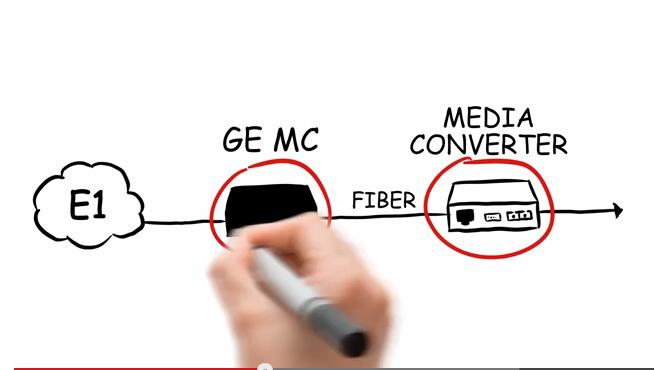Basics of Layer 1 in GPON and EPON networks
Layer 1 – or physical layer in OSI model, is basically built on a one single model type – single fiber, and each ONU has 1 fiber connected (not including the 1+1 backup cases, which is a special case, and will be reviewed in more details in our blog.
Heart of the any GPON or EPON network is OLT – Optical Line Terminal. Or, you can call it POP central equipment, similar to the media converters chassis, when standard P2P scheme FTTH deployment is done. The biggest difference that is with this media converter chassis, or any deployment that uses media converters is that from OLT PON port only 1 fiber goes out and then get’s split over a number of ONU’s via passive optical splitters.
Probably you had seen this scheme before many times, but it is worth to put in here again:

Now usually in such schemes, downstream is referred as the direction from OLT to ONU’s, and upstream – from ONU’s to OLT. If you use standard PLC splitter, then each splitter allocates an equal split of optical power to each of the branches. Thus, the achievable reach of whole PON link is a kind of tradeoff of fiber loss against the division of power to each of branches.You can however be more effective and use a FBT type splitters, where attenuation can be split unevenly against the branches, like for example for a 1:4 splitter, it could be 10:30:30:30 %. However, splitter us symmetric in a way of upstream/downstream. If loss is 3db, then it is same in downstream and upstream.
OLT then transmits downstream to ONU’s a signal that conveys timing, control, management and of course – payload. Based on service level commitments and traffic that goes out from ONU’s, OLT offers upstream capacity allocation plan for a near future. Typically it’s 1 – 2 ms. It is important to mention, that ONU is permitted to send information in a direction of uplink only when given permission by a grant, which is contained in bandwidth map. During this time (by the way, we can also say that uplink in GPON/EPON is really TDM – Time Division Multiplexing based) ONU sends it’s upstream data burst, which also includes not only payload, but also control & management information.
How does the OLT knows, from which ONU this particular burst has arrived? Here each ONU must offset it’s notion of a zero ethanol transmission time it takes for a signal from OLT to each ONU, plus processing delay, and finally the signal back from ONU to OLT. OLT measures round trip delay.
Another PON feature worth to mention here is the discovery of new ONU’s. As you might already know, ONU’s are not required to be configured at all before they are passed over to technicians to install in field. And this discovery is truth not only for newly installed ONU’s, but also for those, who were offline for some time to power failures at customers side, or cut optical cable. To achieve that, OLT periodically broadcasts a discovery grant, which authorizes every ONU that is not yet activated on the PON to transmit it’s identity. It’s like in an army, where commander asks periodically everybody call his name and then confirms that with a list in his hands. Since OLT in this cases does knows what will be a round-trip delay for a newly discovered ONU (does not knows yet!), OLT opens temporary quiet window, or also in some documents called – ranging window, a time interval where ALL ONU’s – also unactivated are permitted to transmit.
Now, if you had read above TDM principle, then you might also imagine a situation, that 2 newly activated ONU’s, can attempt to send bursts at same time, and if time really overlaps – they both will deadlock. And theoritically, beeing in such same phase position they could try get a grants to access to OLT forever – and not successfully.
Here’s where PON’s algorithm get’s really smart – ranging protocol specifies that ONU introduces a random delay in it’s response to commanders – OLT invitation, so no 2 soldiers will ever say their names out same time. It can happen one time, but later for sure no.
Hungry for more?
Theoretically from a point of view of OSI model, Layer 1, or Physical Layer is covered here
EPON ONU’s as a product examples are here






